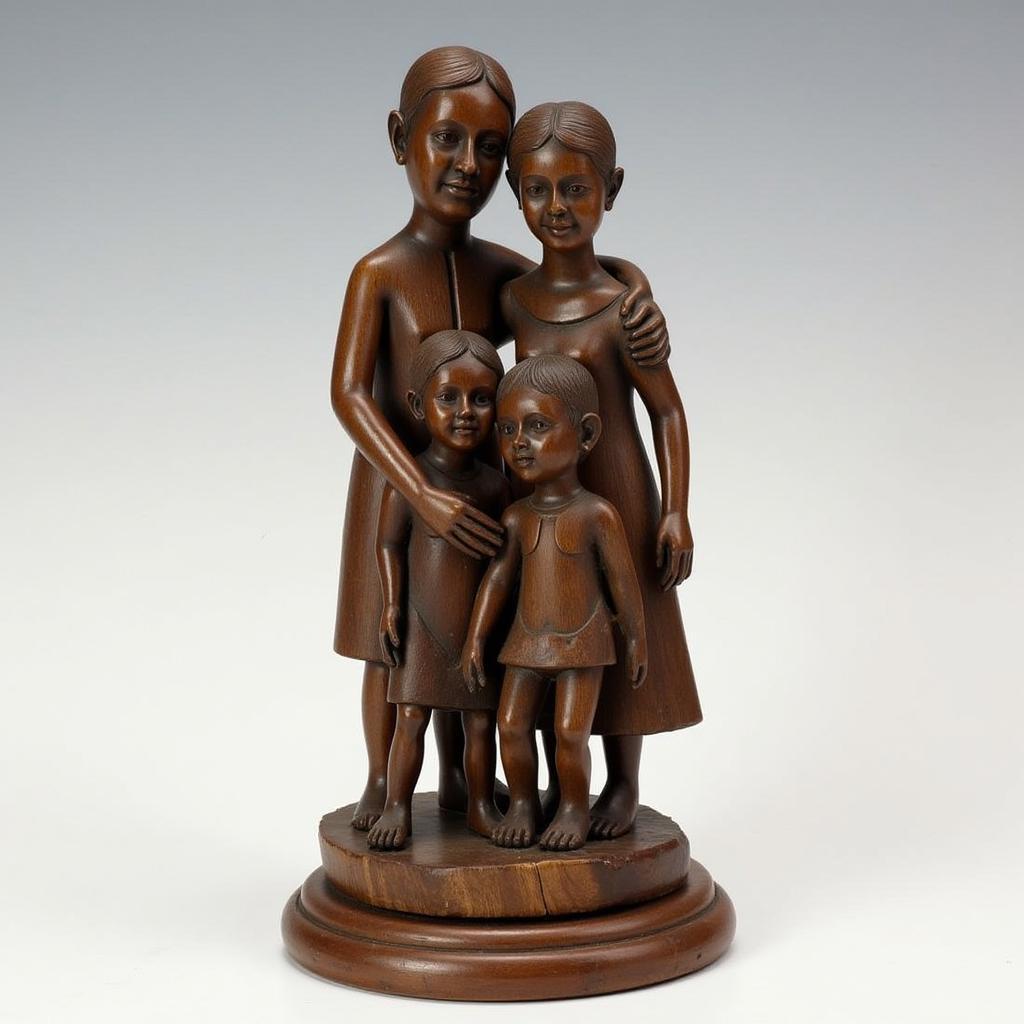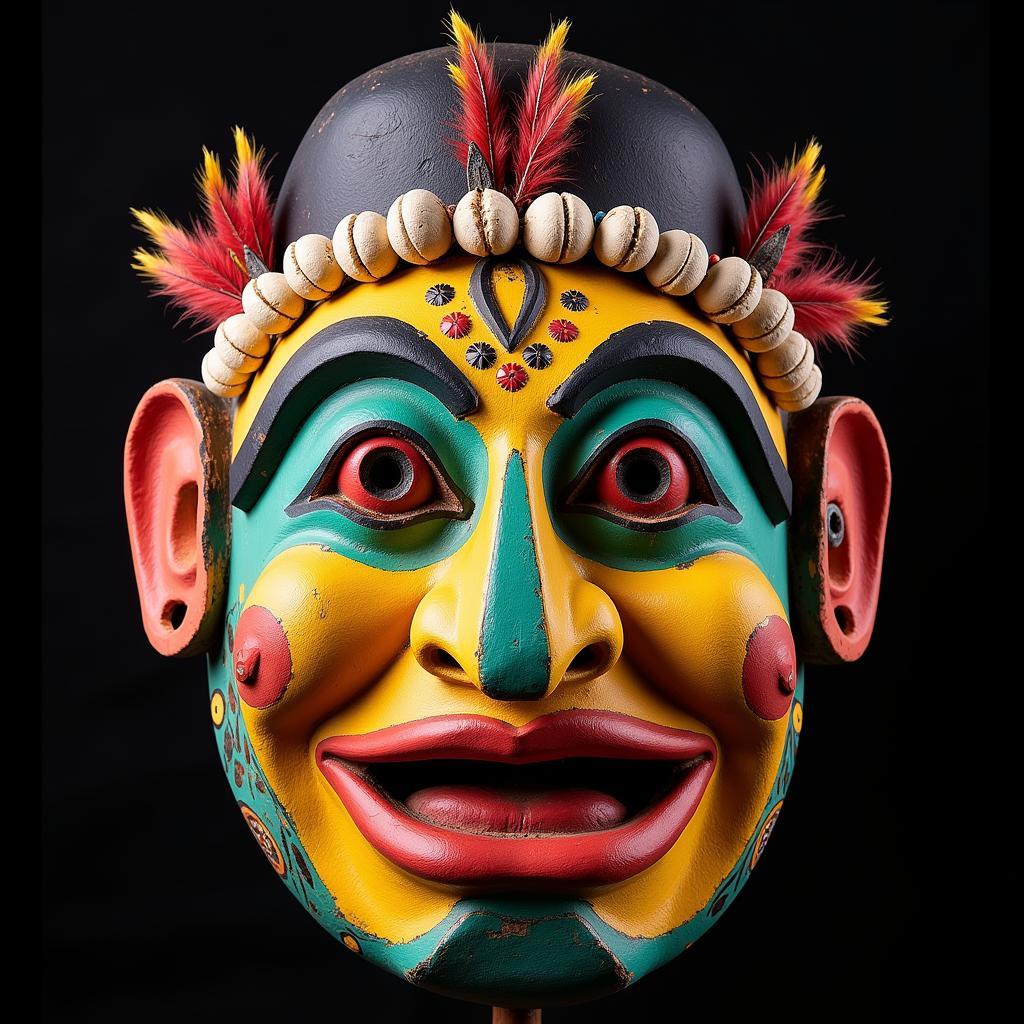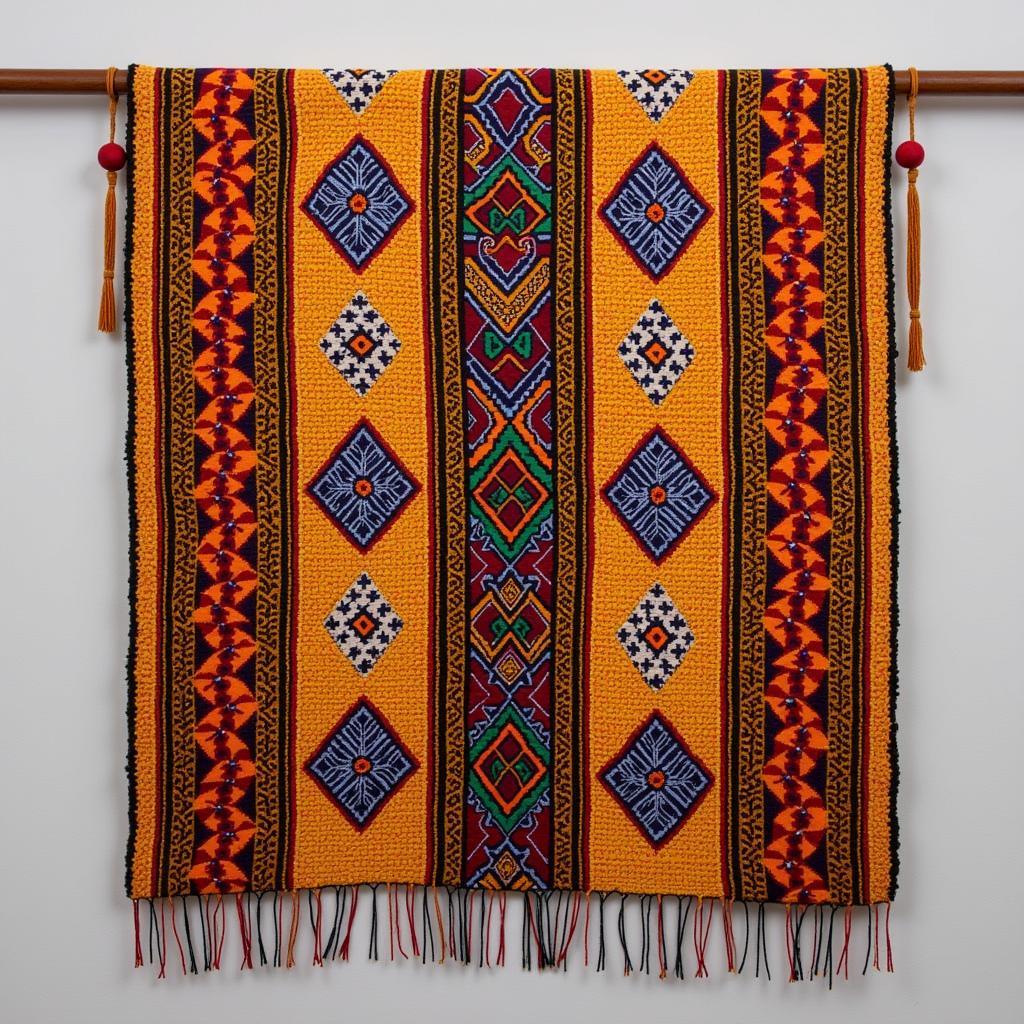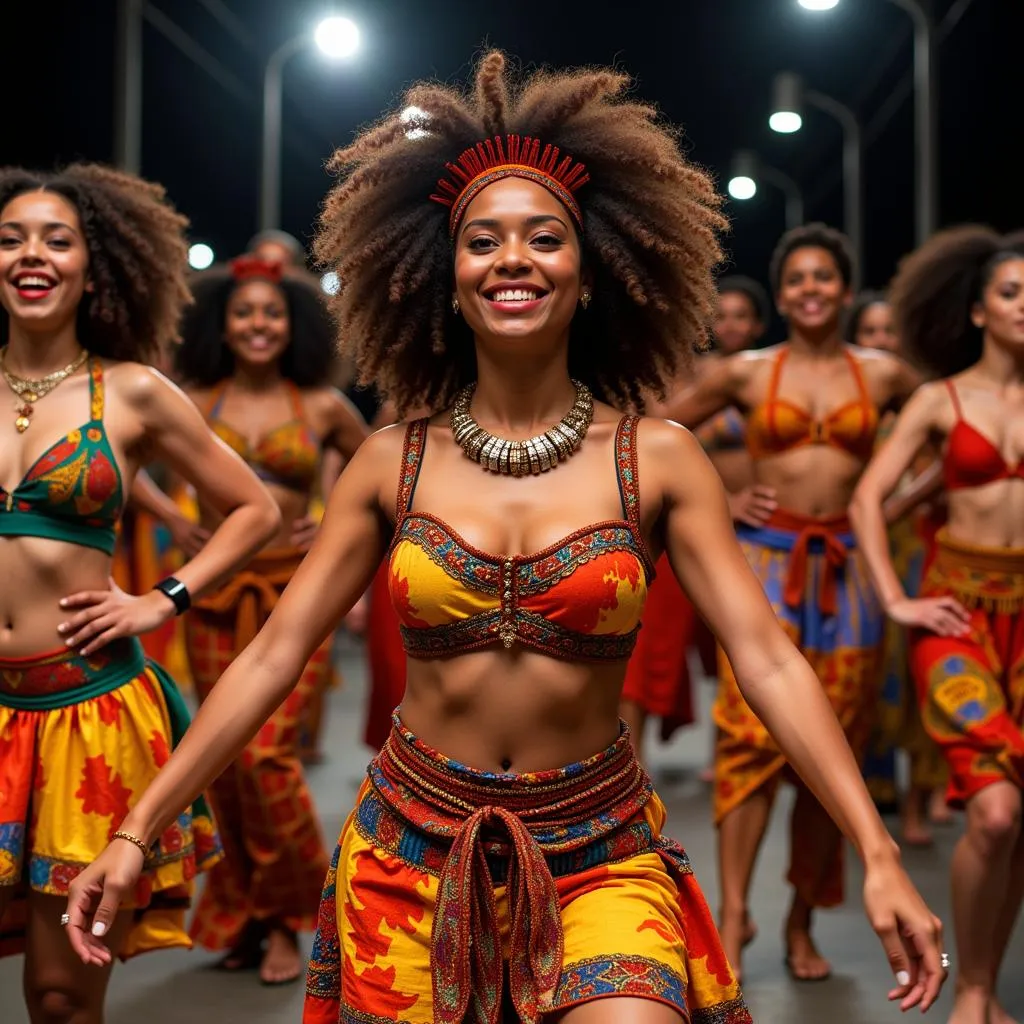Exploring the Rich Tapestry of African Family Art
African Family Art is a vibrant expression of kinship, heritage, and cultural values across the diverse continent of Africa. From intricate masks and sculptures to colorful textiles and pottery, these art forms offer a unique window into the complex social structures, beliefs, and traditions that shape family life in different African communities. This article delves into the significance of african family art, exploring its various forms, functions, and the stories they tell.
African family traditions are often deeply intertwined with artistic expression. Art plays a crucial role in ceremonies, rituals, storytelling, and the transmission of cultural knowledge across generations. Whether it’s a mask used in a coming-of-age ceremony, a carved figure representing an ancestor, or a woven textile symbolizing family unity, african family art embodies the very essence of what it means to belong. The art often reflects the values of community, respect for elders, and the importance of lineage. For instance, in many cultures, african family relationships are paramount.
The Diverse Forms of African Family Art
African family art encompasses a breathtaking array of forms, each with its unique significance and aesthetic qualities. Sculptures, often carved from wood or stone, depict ancestors, deities, or important figures within the family. Masks, used in various rituals and performances, embody spirits and represent powerful forces. Textiles, adorned with intricate patterns and vibrant colors, serve as both functional objects and symbolic representations of family history and identity. Pottery, often decorated with geometric designs or figurative elements, plays a vital role in daily life and ceremonial practices.
The materials used in african family art are often locally sourced and imbued with symbolic meaning. Wood, for example, might be chosen for its strength and durability, representing the resilience of the family unit. Clay, associated with the earth and fertility, can symbolize the continuity of life and the importance of progeny. The creation of these art forms is often a communal activity, strengthening bonds within the family and reinforcing shared cultural values.
 African Family Sculpture Wood Carving
African Family Sculpture Wood Carving
How is African Family Art Used?
Beyond their aesthetic value, objects of african family art serve vital functions within the family and community. They are often used in rituals and ceremonies marking important life events such as births, marriages, and funerals. These objects can act as intermediaries between the living and the spiritual world, invoking blessings, protection, or guidance from ancestors. They can also serve as teaching tools, used to transmit cultural knowledge, moral values, and family history to younger generations. In some cultures, specific pieces of art may be passed down through generations, serving as tangible links to the family’s past.
Many families display their art prominently in their homes, not just as decoration but as a constant reminder of their heritage and identity. These objects can also serve as status symbols, reflecting the family’s social standing or the artistic skill of its members. Furthermore, african family art can be a source of income for families, particularly in communities where tourism or the art market provide economic opportunities.
 African Family Mask Used in Ceremony
African Family Mask Used in Ceremony
Preserving and Celebrating African Family Art
Preserving african family art is essential for safeguarding cultural heritage and ensuring that future generations can connect with their roots. Museums and cultural institutions play a vital role in this effort, collecting, preserving, and exhibiting these invaluable artifacts. However, it is equally important to support local initiatives that empower communities to preserve their own artistic traditions. This can involve providing resources for artists, establishing community museums, and promoting cultural tourism that benefits local families and helps sustain their artistic practices.
The growing interest in african extended family structures and their cultural significance further highlights the importance of preserving and celebrating these art forms. Understanding their historical context and the stories they tell provides valuable insights into the richness and diversity of African family life.
 African Family Textile Kente Cloth
African Family Textile Kente Cloth
Understanding the Deeper Meaning of African Family Art
African family art is more than just aesthetically pleasing objects. It is a powerful expression of cultural identity, family history, and spiritual beliefs. By studying and appreciating these art forms, we gain a deeper understanding of the rich and diverse cultures of Africa and the importance of family in these societies. Remember, even in modern times, the concept of an african happy family is strongly tied to tradition and cultural values, often reflected in their art. For further exploration, discover more about the symbolic representations found in african family cartoon.
Conclusion
African family art provides a fascinating glimpse into the heart of African family life. These art forms, rich in symbolism and cultural significance, celebrate the bonds of kinship, honor ancestors, and transmit traditions across generations. By continuing to explore and appreciate african family art, we can contribute to the preservation of these valuable cultural treasures and gain a deeper understanding of the diverse tapestry of African cultures.
FAQ
-
What are some common materials used in African family art?
Wood, stone, clay, textiles, beads, and metal are frequently used. -
How is African family art used in ceremonies?
Masks, sculptures, and textiles are often used in rituals and ceremonies marking life events like births, marriages, and funerals. -
What is the significance of ancestors in African family art?
Ancestors are often depicted in sculptures and other art forms, representing the continuity of life and the importance of family history. -
How can I support the preservation of African family art?
You can support museums, cultural institutions, and local initiatives that empower communities to preserve their artistic traditions. -
Where can I learn more about African family art?
Museums, cultural centers, and online resources offer valuable information and insights into African art and culture. -
Are there contemporary artists continuing these traditions?
Yes, many contemporary African artists are continuing and evolving these artistic traditions, creating innovative works that reflect both their heritage and the present day. -
How does African family art reflect family values?
It often depicts scenes of family life, emphasizes the importance of elders, and uses symbols of unity and strength.
Have other questions about African Family Art?
Here are some other questions you might be interested in:
- What are the different regional styles of African family art?
- How has colonialism impacted African artistic traditions?
- How are women represented in African family art?
- What is the role of storytelling in African art?
When you need assistance, please contact us at Phone Number: +255768904061, Email: kaka.mag@gmail.com Or visit us at: Mbarali DC Mawindi, Kangaga, Tanzania. We have a 24/7 customer service team.

